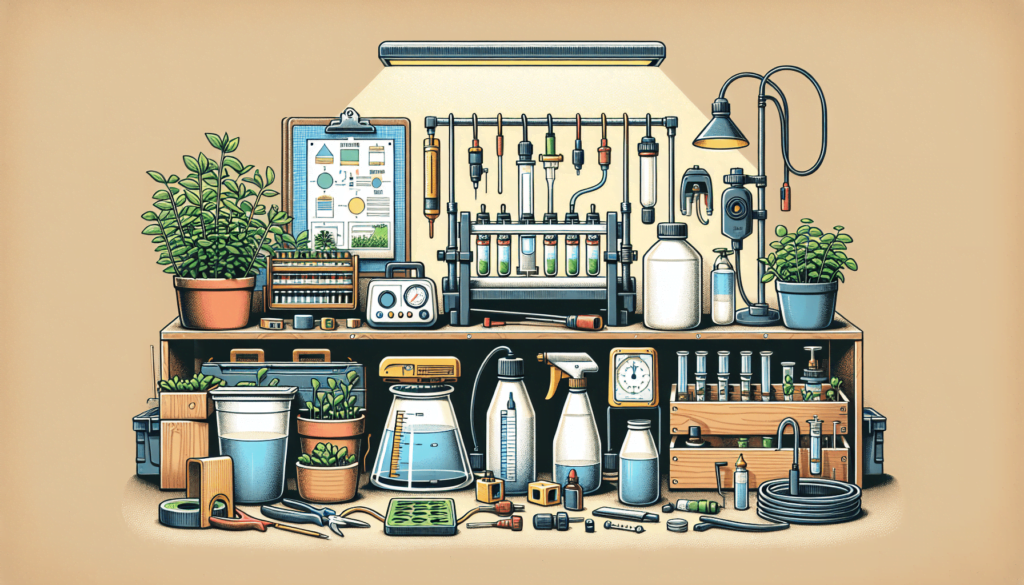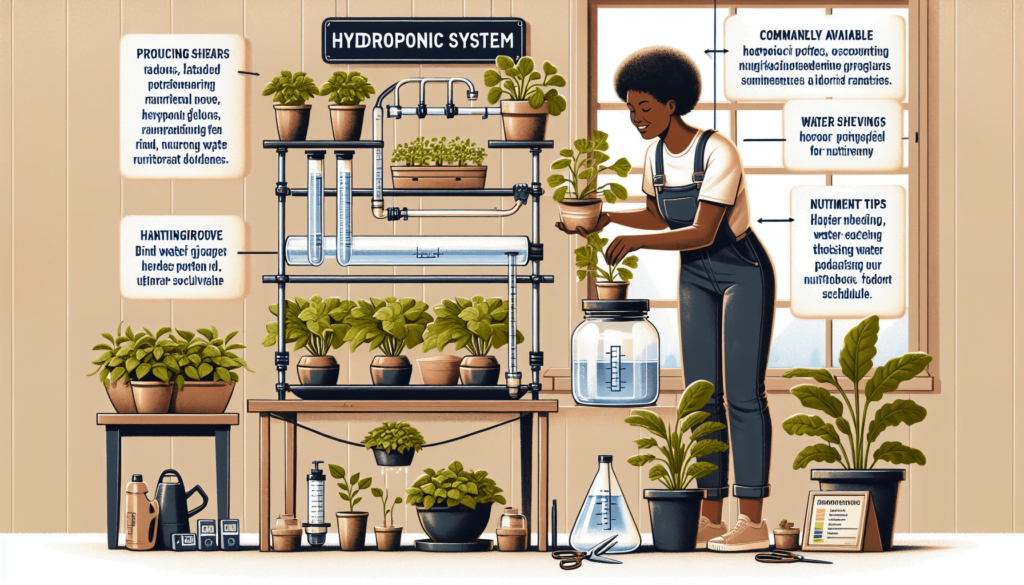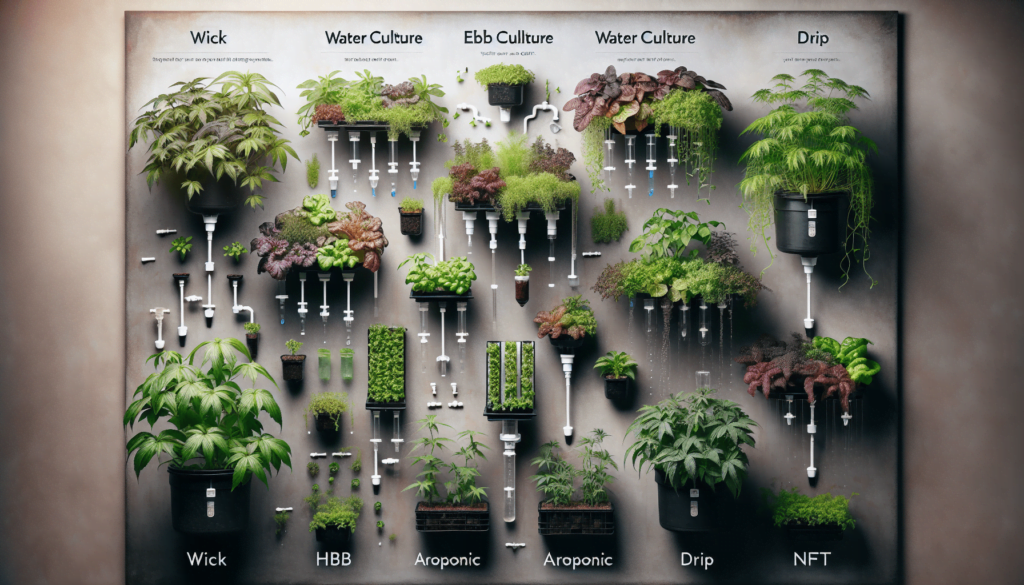Drawing on the shared love and passion we share for nurturing living things, today's topic deals with an exciting aspect of hydroponic gardening – how to trellis plants in a Deep Water Culture (DWC) bucket. Dealing with plants is always rewarding, isn't it? But, when we bring in the innovative world of hydroponics into the equation, things can get more fascinating. This comprehensive guide is aimed at cultivating your green thumb in a slightly unconventional yet highly efficient way to plant using a DWC bucket. Get ready to pique your curiosity and expand your gardening horizons!
How-to build a 5 gallon hydroponic DWC system with trellis for cucumbers
In this video I need to move my cucumbers away from my peppers. So I create a 5 gallon dwc bucket system with trellis and sight ...
Understanding Hydroponic Gardening
An overview of hydroponic gardening
Who needs soil when you have water? That's the magic of hydroponic gardening! It all revolves around growing plants in a water-based, nutrient-rich solution instead of traditional soil – crazy right? This method lets plants grow quicker, yields tastier fruits, and cuts back on the mess we all know gardening brings along. It's pretty simple really, just give your plants what they require, when they need it and watch them thrive!
Benefits of hydroponic gardening
Now let's talk benefits! Hydroponic gardening isn't just a fancy method for green thumbs – it has real advantages. Without soil, your plants are less likely to be infected with pests and diseases, which means you won’t need to wage war with bugs or fungi. Plus, growing plants in a controlled environment can result in a surprisingly high yield. Another cool fact, hydroponic gardening uses up to 90% less water than traditional soil gardening. It's like having your very own eco-friendly garden haven!
Different methods used in hydroponic gardening
Imagine hydroponic gardening as a rainbow – there are loads of methods to choose from! You've got the wick system (no pumps – a passive system), water culture (ideal for water-loving plants), drip system (professional gardener's love this), nutrient film technique, and aeroponic (the high-flying rocket of hydroponic systems). Today, we're focusing on one special method that's as fun to use as it is to say – the Deep Water Culture (DWC) bucket system.
Deep Water Culture (DWC) Bucket System Explained
Essential parts of a DWC Bucket System
Picture the DWC bucket as a premiere five-star resort for your plants! It comprises of a bucket (where your plants kick back and grow), a net pot stuffed with growing medium (think of it as a cozy plant bed), an air stone diffuser (think bubbles in a jacuzzi), and an air pump (provides a constant supply of fresh air so the plant roots don't get asphyxiated).
How the DWC Bucket System works
Ever watched a plant chilling in its own sauna-like space where it's given precisely what it needs to thrive? That's pretty much how our DWC bucket system works. The air pump maintains a healthy flow of oxygen to the roots while they float in nutrient-rich water. This pampers the plant roots with constant hydration, nutrition, and oxygen, producing rigorous growth and abundant yields.
The advantages of using a DWC Bucket System
DWC bucket systems are easy as pie to set up, simple to manage and, above all, they’re exceptionally space economical. They offer more control over plant nutrition, eliminate soil-borne diseases and pests, decrease water usage, and promote faster and healthier plant growth. But here's the kicker – you can even add trellising to give your plants that extra bit of support they need!

Selection of Suitable Plants for Trellising in a DWC Bucket
Listing plants suitable for DWC Bucket System
Ever heard of peas rooting for nets or cucumbers cuddling trellises? Many plants naturally prefer a bit of support while they grow, and this is ideally suited for DWC bucket systems. Ideal candidates include tomatoes, pole beans, gourds, peas, and even flowers like morning glory!
Ideal growth conditions for these plants
To ensure your plants live out their high-rise dreams, they need the right ‘growing' conditions. Conditions like the right light, temperature, humidity, and pH level are crucial and vary from plant to plant. For instance, tomatoes like warm temperatures between 65 to 85 degrees Fahrenheit with pH around 6 – 6.8.
Benefits of trellising these plants
Trellising is like giving your plants a little leg-up. It aids in maintaining plant health, increases air circulation reducing disease possibilities, makes it easier for light to penetrate, and simplifies life when it comes to harvesting. Plus, it saves your back the effort – no more bending over for picking those ripe, juicy tomatoes!
Setting Up Your DWC Bucket for Trellising
Required tools and materials
Ready to get your hands dirty – or in this hydroponic case, clean and wet? Here's what you need: your DWC bucket system, pH testers, pH up/down adjusters, net cups, hydroponic nutrients suited to your plant, air pump and diffuser, growing medium like clay pebbles, the plant of your choice, and of course, your trellis.
Step-by-step guide for setting up DWC Bucket
Setting up your DWC bucket is as easy as 1,2,3! You'll begin by inserting air stone diffuser in your bucket and connecting it to the air pump. Next, fill your net cup with growing medium and plant. Place the cup in the bucket lid. Now, fill your bucket with the nutrient water solution until it just touches the base of the net cups. Last, adjust pH, switch on the air pump, and you're good to go!
Safety measures while installing DWC Bucket
Always remember, water and electricity are not best buds. Ensure your electrical outlets are well away from your DWC setup. Also, be sure to place your buckets on a steady, flat surface to avoid any water spillage or systems toppling over.

Understanding the Concept of Trellising
Definition and importance of Trellising
Trellises are like ladders that plants use to reach for the stars, well, the sunlight. They are structures that give your plants something to lean on when they're all grown up and bearing the fruits of your labor (literally!). Trellising is crucial primarily because it prevents plants from flopping over, allowing them to air out and evade diseases.
Different types of trellises
There's no one-size-fits-all with trellises, they come in all shapes and sizes. From sturdy fences and arbors for larger plants to wire cages and stakes for smaller plants, the options are endless. But remember, the best trellis will depend on your plant type and needs.
Benefits of Trellising for plants
Trellising doesn’t just gift your garden a pleasing look; it has benefits aplenty! It ensures better fruit quality, allows for easy harvesting, maximizes growth and yield of your plants, and can prevent various plant diseases.
Building the Perfect Trellis for Your DWC Bucket
Design considerations for DWC Bucket trellis
Designing a trellis for your DWC bucket needs some thought. It depends on the type and size of your plant, the required sunlight, and its tendency to cling and climb. Your trellis should also be easy to clean and resilient enough to hold the weight of your grown plants.
Materials suitable for constructing a trellis
Bamboo? Plastic? String? So many choices! The kind of material you select for your trellis should be robust, long-lasting, and safe for your plants. Remember, the best trellis is just like the best friend – supportive, dependable, and in it for the long haul!
Detailed guide for constructing DIY trellis
Making your own trellis can be as simple as tying strings to a frame and letting your plants do their thing. Or, you can go grand and build a wire and wood frame. Ensure that your trellis is securely anchored and has enough space for your plants to twine around and through.
Guide to Trellising Your Plants in the DWC Bucket
Selecting the right time to begin trellising
Plants are a bit like kids; they need the right guidance at the right time. You ideally want to start trellising in the early stages when your plants are young and flexible. But not too soon, else you run the risk of damaging tender roots.
Procedure to trellis plants in DWC Bucket
Trellising your plants is an art, as it involves gentle coaxing and positioning them to climb the trellis structure. And don't worry if your plants seem a bit stubborn at first, a little string or garden tie can work wonders!
Understanding how to care for trellised plants
Caring for your trellised plants involves regular check-ins: Are the leaves healthy? Do the roots look good? Is the plant climbing the trellis as it should? Being watchful and responding quickly to your plant’s needs is the key here.
Troubleshooting Problems Related to Trellising in DWC Bucket
Common issues faced during trellising
Sometimes, our green babies can throw up issues like abnormal growth, yellowing leaves, or reluctance to climb the trellis. But fear not, most of these problems have easy fixes if caught early!
Solutions to these issues
The key to solving problems is to understand their root cause. For instance, yellowing leaves could indicate a nutrient deficiency – something a little tweak in nutrient levels can address.
Preventive measures to avoid these issues
An ounce of prevention is worth a pound of cure, they say. Regularly checking your DWC bucket and trellis, maintaining correct pH levels of your nutrient solution, and ensuring that your plants are getting their optimum light and temperature settings can all help prevent common issues.

Maintenance of Your DWC Bucket and Trellised Plants
Routine maintenance tips for DWC Bucket
To ensure your DWC bucket is always in top form, routinely clean and sterilize it between plant batches, check your pH levels frequently, keep an eye on nutrient levels, and always ensure that your air pump is working smoothly.
Specific care for trellised plants
Taking care of your trellised plants is no different than tending to a regular plant. Regular checks for pests, diseases, drooping or yellowing of leaves can go a long way. And of course, don't forget TLC – Tender Love and Care!
Replanting or replanning in the DWC Bucket System
Finished with your first successful plant and ready for the next one? Just clean out your DWC bucket properly, set it up again like you did the first time around, and you're ready for your next round of hydroponic gardening!
Success Stories of DWC Bucket and Trellising
Personal gardening anecdotes
Growing plants successfully is personal to every gardener. For instance, our friend Jane had her first successful yield from her DWC bucket system. She was super excited to share her beautiful, vigorous tomato plants pictures with us!
Testimonials and reviews from successful gardeners
We've been told that once you go DWC, you never look back! Many gardeners rave about how their plants take off in the DWC system and how trellising has made their gardening journey easier and more fruitful (pun intended!).
Inspiring stories to motivate new gardeners
Trust us when we say that the magic of seeing your very first root peeking out of your DWC system, or your plant climbing its very first trellis rung, it is a feeling like no other. Once you experience this for yourself, we're sure you'll be sharing your own success story in no time!
Let the beauty of hydroponic gardening inspire you to take a leap into this world of soil-less wonder. Whether it's the vibrant green leaves, the crazy growth velocity, or the irresistible joy of seeing your plants reach their full potential, it's a journey worth embarking upon. So let's grab those DWC buckets and start trellising!
-
 VIVOSUN 4 x 4Ft. Adjustable Trellis Net with 4 Hooks for Supporting Climbing Plants, Vegetables, Fruits, and Flowers, Single Pack$14.99
VIVOSUN 4 x 4Ft. Adjustable Trellis Net with 4 Hooks for Supporting Climbing Plants, Vegetables, Fruits, and Flowers, Single Pack$14.99 -
 New for 2024 – Secure Plastic Plant Clips for Climbing Plants in Gardens, Perfect for Supporting Tomato, Grape Vine, and Other Vegetables$9.99
New for 2024 – Secure Plastic Plant Clips for Climbing Plants in Gardens, Perfect for Supporting Tomato, Grape Vine, and Other Vegetables$9.99 -
 Tall Plant Support Trellis for Climbing Vines, Flowers, and Cucumbers – LOMNYIY Garden Trellis (55.1 inches Tall, 2 Pack)$23.56
Tall Plant Support Trellis for Climbing Vines, Flowers, and Cucumbers – LOMNYIY Garden Trellis (55.1 inches Tall, 2 Pack)$23.56





